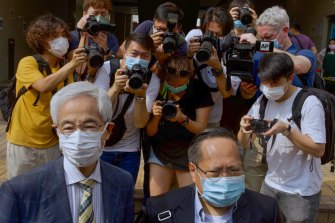Unique macro-vertebrate at risk from blood sport and climate change

IMAGE: AN ARTISTIC DEPICTION OF A KANGASKHAN - A TWO-METER-TALL POKÉMON ENDEMIC TO AUSTRALIA. view more
CREDIT: IMAGE BY KATERINA ZAPFE
- The kangaskhan, Australia's only species of endemic Pokemon in Pokemon Go, is commonly poached within its natural habitat by Pokemon trainers for use in fighting contests
- Researchers used several species distribution modeling algorithms to predict how climate change, on top of the already existing human-induced pressures, would impact the distribution of the kangaskhan in the future
- In addition to this, they found a way to measure how biased commonly used species distribution models are, and found that some models are so biased that their results weren't influenced by the data at all
- The researchers compared these results to previously published models for hundreds of species of Australian mammals and found similar biases
- This research has highlighted specific problems with common species distribution models, and has given scientists new statistical tools to refine them in the future
Kangaskhan (Garura kangaskhani) are two-meter-tall Pokemon, endemic to Australia. Although commonly spotted around cities and other urban areas, information is lacking about their basic biology and wider range distribution. Much of what is known is based on anecdotes from the public, especially unlicensed breeders, many of whom are not trained in scientific research. Today, kangaskhan are believed to be threatened due to frequent poaching of adults and eggs. The poaching is primarily motivated by the demand for these animals to be used in fighting contests. This pressure, combined with the fact that climate change is predicted to have a large impact in Australia over the next few decades, has resulted in a bleak outlook for this majestic Pokemon species.
Now, researchers in the Biodiversity and Biocomplexity Unit at the Okinawa Institute of Science and Technology Graduate University (OIST) have taken an extensive look at how climate change will impact the existence of suitable habitat for kangaskhan. This study was published today in Methods in Ecology and Evolution.
"Apart from seeming to prefer partly cloudy weather, very little is known about the species' climatic preferences," said lead author Dr. Dan Warren, who previously worked as a researcher in Australia. "This makes it difficult to estimate the response of kangaskhan to environmental change, or how climate change might combine with the effects of poaching to impact the species' long-term survival. For this research, we used several well-known modeling methods to gain insight into how threatened kangaskhan really are."
With data that was initially recorded by hobbyists and professional trainers seeking out kangaskhan for exploitation, the researchers attempted to shed light on what the future holds for this species. Species distribution models were the obvious way to go. These models are a common way for scientists to predict changes in the availability of suitable habitat for a species, in response to estimated shifts in environmental parameters like rainfall, humidity, temperature, and vegetation cover.
In terms of the results, the models differed on what they predicted the future to be for the kangaskhan depending on the algorithms used. Three of the models predicted a decrease in habitat suitability, though differed substantially on the magnitude of this decline. Two other models switched their answer depending on the climate estimates used, and a sixth model predicted an increase in suitability of habitat. Policymakers and stakeholders should take this uncertainty into account and err on the side of caution when it comes to safeguarding the future of kangaskhan.
Aside from revealing uncertainty surrounding the long-term survival of kangaskhan, the research has also shed light on how scientists can calculate the biases that come with species distribution models. Every one of these models comes with a level of bias and uncertainty, depending on the choices made in the modeling process. For example, when predicting the implications of climate change, the amount of future CO2 emissions needs to be considered, and yet estimating this can be tricky as it's based on human behavior. Differences in these estimates can interact with other aspects of the modeling process, resulting in biases in predictions of how climate change will affect threatened and endangered species. Scientists know about these biases but have never found a way to measure them before, until now.
"We found that we could determine the level of bias with a simple statistical test," said Dr. Warren. "And, in doing so, we realized that some of these models could be so biased that the data didn't have much effect on their results... effectively the conclusion was picked based on study design regardless of what the data actually showed," said Dr. Warren.
In addition to the kangaskhan, the researchers demonstrated similar biases for these models by reexamining a previous study that built models for 220 species of Australian mammals, as well as a study that simulated artificial organisms in order to understand how well models estimated species' environmental tolerances. The researchers hope that by revealing these biases they are providing a more secure future for kangaskhan and the rest of the world's biodiversity.
Dr. Warren emphasized that although the study itself might seem strange, what it's revealed will actually go on to help other researchers create more robust estimates of species distribution. His primary reason for choosing to do this research on a Pokemon character was to engage a broader audience with issues that conservation scientists regularly need to think about.
"It's a bit silly but it's also cool science," said Dr. Warren. "Stakeholders use these models for predicting a number of important ecological phenomena, from the effects of climate change, to the dispersal of diseases and invasive species, so having a firm understanding of the biases the models might have is important. We've just scratched the surface of what we can do with this method so I think this could be a useful tool for a whole bunch of things."
His final point was a word of caution with respect to the culture that surrounds Pokemon. "It's specifically based around over-exploitation with the tagline 'gotta catch them all.' The rarer they get, the more valuable they get. This is like some of the larger tuna species, which are in serious danger of going extinct. We might have focused on climate change in this study but, for many Pokemon (and many species around the world), overexploitation should also be a concern."









